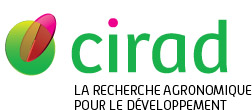Persyn Emma, Duyck Pierre François, François Marie-Christine, Mille Christian, Jacob Vincent, Jacquin-Jolyb Emmanuelle. 2025. Transcriptomic analyses in thirteen Tephritidae species provide molecular insights into the ecological driving force behind odorant receptor evolution. Molecular Phylogenetics and Evolution, 206:108322, 14 p.
|
Version publiée
- Anglais
Sous licence  . .
612486.pdf Télécharger (1MB) | Prévisualisation |
Résumé : The insect olfactory system has evolved while guiding species to specific mating partners, different food sources, and oviposition sites. How species repertoires of odorant receptors (ORs), responsible for the detection of volatile cues, have been shaped by ecologically driven forces remains poorly understood. Due to several host switches back and forth throughout their evolutionary history, fruit flies of the Tephritidae family (Diptera) show highly diverse host preferences, making them good models to address this question. For instance, a comparative analysis of genomic and transcriptomic resources on a large variety of fruit fly species could provide statistical conclusions. Here, we used a RNAseq approach to identify the OR repertoires of thirteen Tephritidae species with different host ranges, namely Bactrocera curvipennis, Bactrocera dorsalis, Bactrocera psidii, Bactrocera tryoni, Bactrocera umbrosa, Bactrocera zonata, Ceratitis capitata, Ceratitis catoirii, Ceratitis quilicii, Dacus ciliatus, Dacus demmerezi, Neoceratitis cyanescens, and Zeugodacus cucurbitae. Manual curation allowed us to annotate 60–80 OR transcripts per species, including the obligatory coreceptor Orco. In total, we reported 698 new OR sequences. Differential expression analyses between antennae and maxillary palps and between the two sexes, performed in three species, revealed some organ- and sex-biased OR expression. Moreover, after adjusting for phylogenetic distance, we found significant correlations between some characteristics of the OR repertoire and species host range: sequences and relative expression level of several ORs were more conserved in polyphagous than in oligophagous species and, in addition, other ORs were found specifically in polyphagous species. Our results provide molecular insights into the ecological driving forces behind Tephritidae OR evolution.
Mots-clés Agrovoc : phylogénie, Tephritidae, Bactrocera cucurbitae, Bactrocera dorsalis, Dacus, Ceratitis, évolution, Bactrocera, Ceratitis capitata, comportement sexuel, écologie
Mots-clés géographiques Agrovoc : La Réunion, France
Mots-clés libres : Odorant receptor, Fruit flies, RNAseq, Molecular phylogeny, Differential expression, Host range
Agences de financement européennes : European Regional Development Fund
Agences de financement hors UE : Institut National de Recherche pour l'Agriculture, l'Alimentation et l'Environnement, Centre de Coopération Internationale en Recherche Agronomique pour le Développement, Conseil Régional de La Réunion
Auteurs et affiliations
- Persyn Emma, CIRAD-BIOS-UMR PVBMT (FRA)
-
Duyck Pierre François, CIRAD-BIOS-UMR PVBMT (NCL)
 ORCID: 0000-0001-5484-1970
ORCID: 0000-0001-5484-1970
- François Marie-Christine, INRAE (FRA)
- Mille Christian, IAC (NCL)
-
Jacob Vincent, CIRAD-BIOS-UMR PVBMT (REU)
 ORCID: 0000-0002-7055-213X - auteur correspondant
ORCID: 0000-0002-7055-213X - auteur correspondant
- Jacquin-Jolyb Emmanuelle, INRAE (FRA) - auteur correspondant
Source : Cirad-Agritrop (https://agritrop.cirad.fr/612486/)
[ Page générée et mise en cache le 2025-05-05 ]




